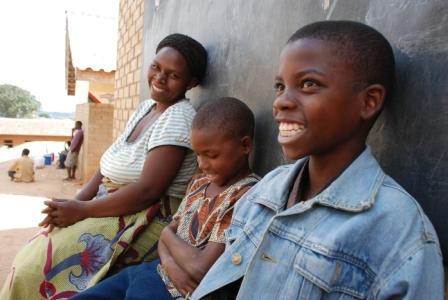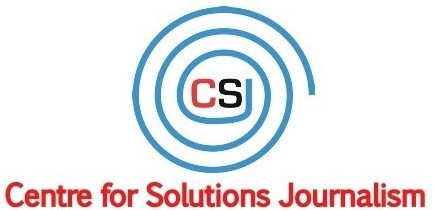
The statistics are staggering. Almost 78 million people are living with HIV while about 39 million have died of Aids-related illnesses. Every day about 5,753 people contract HIV. In the wake of such startling statistics, is the global ambition to end Aids in 2030 realistic? BRIAN LIGOMEKA ponders.
Call it a state of eccentricity. Impossibilities are now possibilities. Once upon a time, being diagnosed with HIV was regarded as death sentence. Today the situation is different.
Twenty-seven year old Agnes Milanzi from Ndanga Village in Mulanje is among many people in the African nation of Malawi who believe that living with HIV is not capital punishment but one of those conditions that occurs in life which can successfully be managed.
“I know I am HIV positive, yet I am one of the happiest women in my village,” she said as she narrated how she delivered an HIV negative baby despite her status.
According to Agnes, when she was diagnosed HIV positive during her second month of pregnancy, she asked for an abortion to avoid transmitting the virus to the baby. Her request was rejected as inducement of abortion is illegal in Malawi.
It was during the post-HIV testing counselling that she learnt of Prevention of HIV from Mother to Child Transmission (PMTCT) through the use of drugs.
“I accepted the doctor’s guidance, but I never believed I could deliver an HIV free baby,” she said, adding: “But lo, the medical magic worked. I delivered a healthy HIV-free baby.”
Agnes is among those benefitting from the implementation of Option B+ programme for pregnant women in Malawi, which offers anti-retroviral therapy (ARVs) to all pregnant women with HIV, regardless of CD4 cell count.
Malawi is currently offering anti-retroviral treatment to almost 600,000 people living with the virus as it fights from all fronts to achieve its dream of creating an HIV-free generation by 2030.
Malawi’s Health Minister Dr Peter Kumpalume is optimistic that the country will accomplish its goal as government and other stakeholders have employed multiple strategies in fighting the pandemic.
“We are fighting using every means to achieve our target of putting 90 percent of people living with the virus on treatment by 2020 and eventually eliminate the disease by 2030.”
90-90-90 targets
Data from the 2015 Malawi Aids Response Report shows that having started offering the treatment to 3,000 people in 2003, Malawi had 585,660 people on its ARV treatment roll at the end of September last year, which in Kumpalume’s words “is no mean achievement.”
With its focus on the 90-90-90 Unaids Global HIV/AIDS strategy, Malawi is projecting that it will be providing HIV treatment for 745,000 patients by the end of 2017, representing 70 percent of the people in need.
The Unaids 90-90-90 target aims to achieve diagnosis of 90 percent of people living with HIV; initiation of treatment for 90 percent of diagnosed people and viral suppression in 90 percent of people on treatment by 2020.
In the case of Malawi, the target entails putting 990,000 HIV positive people (90 percent of 1.1 million) on treatment by 2020. Upon achieving the 90-90-90 target Malawi will eventually aim at attainment of three zeros, namely zero new infections, zero Aids related deaths and zero stigma and discrimination by 2030.
Haunted by the fact that nearly 1.1 million Malawians are HIV positive, government is fighting hard to achieve the 90-90-90 Unaids-set target. But is that target achievable?
Optimists believe the target is attainable courtesy of strategies employed. Malawi, for instance, is using several strategies to meet the 90-90-90 target. One of the strategies is to ensure that HIV tests’ results are delivered in time unlike in the past when it took weeks or even months for people in the rural areas to know the outcome of HIV tests.
With support from United Nations Children’s Fund (Unicef), Malawi is testing the use of Unmanned Aerial Vehicles or drones as a means of exploring cost effective ways of reducing waiting times for HIV testing results for infants.
If successful, the innovation will complement other mechanisms such as road transport and use of SMS to communicate results from the laboratories to the health facilities.
Unicef Representative in Malawi Mahimbo Mdoe believes the drones could be the breakthrough in overcoming transport challenges of HIV test results.
“We hope that the drones can be part of the solution to reduce transportation time and ensure that children who need it start their treatment early,” says Mdoe.
Touting government’s commitment in the fight against Aids, Kumpalume says, “the implementation of Option B+ programme, the delivery of results from the central laboratory to the health facilities through text messages and the testing of drones are all important innovations.”
Currently, the time taken to get from health facilities in rural areas to the lab is 11 days, and the time taken to return the results by road can take as long as 8 weeks.
A healthy cut
Another weapon Malawi has integrated as part of its arsenal in fighting the Aids pandemic is Voluntary Male Medical Circumcision (VMMC).
Malawi’s Chief of Health Services Dr Charles Mwansambo said in an interview that there is “overwhelming evidence of the effectiveness of medical circumcision in reducing the risk of HIV transmission in men…, hence the integration of this strategy.”
Despite facing hurdles in meeting its annual target of 250,000 circumcisions, Malawi believes about 2.5 million men will undergo circumcision by 2020.
Besides circumcision, Malawi HIV Prevention Strategy discloses an ambitious plan to distribute over 250 million condoms between 2015 and 2020. Furthermore, notwithstanding its draconian gay law, government allows HIV testing, counselling, treatment, condom distribution among the estimated population of 40,000 homosexuals.
Attorney General Kalekeni Kaphale recently defended government’s stand explaining that homosexuals in Malawi also deserve good health care.
With Global Fund commitment to pump to Malawi US$616 million from 2014 to 2017 for Aids response and strong political will, the under-resourced nation is sprinting towards achieving the goal of ending the disease by 2030.
Global HIV/AIDS Strategy
The strides to end Aids are not just bearing sweet fruits at national level as is the case with Malawi, but also at global level. There is good news for doubting Thomases. An estimated 17 million people were accessing life-saving antiretroviral medicines at the end of 2015.
A new report released by the Joint United Nations Programme on HIV/Aids (Unaids) titled “Global Aids Update 2016”, shows that the scale-up of antiretroviral treatment since 2010 by most affected countries has reduced Aids-related deaths from 1.5 million in 2010 to 1.1 million in 2015. The development comes as many countries have adopted new guidelines from the World Health Organisation to treat everyone diagnosed with HIV regardless of the viral load or disease advancement.
“The full potential of antiretroviral therapy is being realised,” said Unaids Executive Director Michel Sidibé adding: “I urge all countries to seize this unprecedented opportunity to put HIV prevention and treatment programmes on the Fast-Track and end the Aids epidemic by 2030.”
According to the report, global coverage of antiretroviral therapy reached 46 percent at the end of 2015 with huge gains made in eastern and southern Africa, where coverage increased from 24 percent in 2010 to 54 percent in 2015, reaching a total of 10.3 million people.
The report says South Africa has done exceptionally well by putting 3.4 million people on treatment followed by Kenya with nearly 900 000 on ARVs.
Botswana, Eritrea, Kenya, Malawi, Mozambique, Rwanda, South Africa, Swaziland, Uganda, the United Republic of Tanzania, Zambia and Zimbabwe are among some Sub Saharan countries that have increased treatment coverage by more than 25 percentage points between 2010 and 2015.
The Unaids Fast-Track approach, which is also aimed at achieving 90–90–90 treatment target by 2020, is proving a success.
No wonder, Unaids Country Representative for Malawi Amakobe Sande is optimistic that ending Aids as a public health threat is a possibility. “We have reached a defining moment in Aids response and have a wonderful opportunity to bend the trajectory of the epidemic.”
With millions practising abstinence, condomisation and facing sharp knives during circumcision while those infected are accessing antiretroviral treatment, many countries are putting HIV into cages, simply waiting for annihilation, come 2030. This means global HIV/AIDS strategy is on track.
